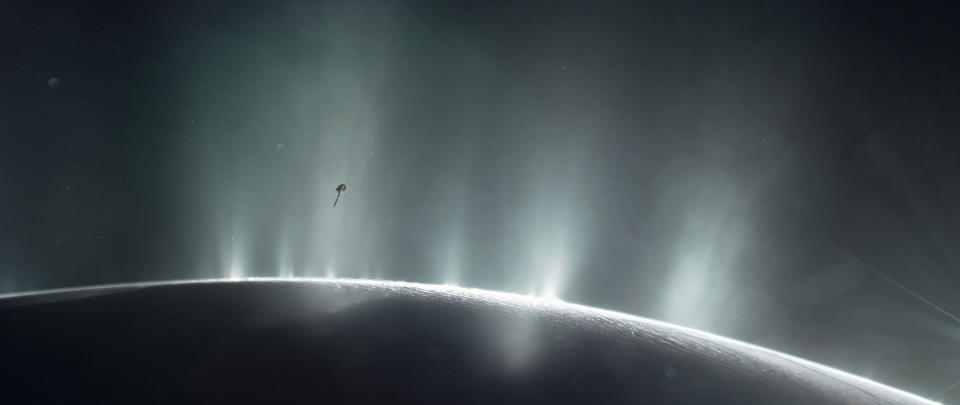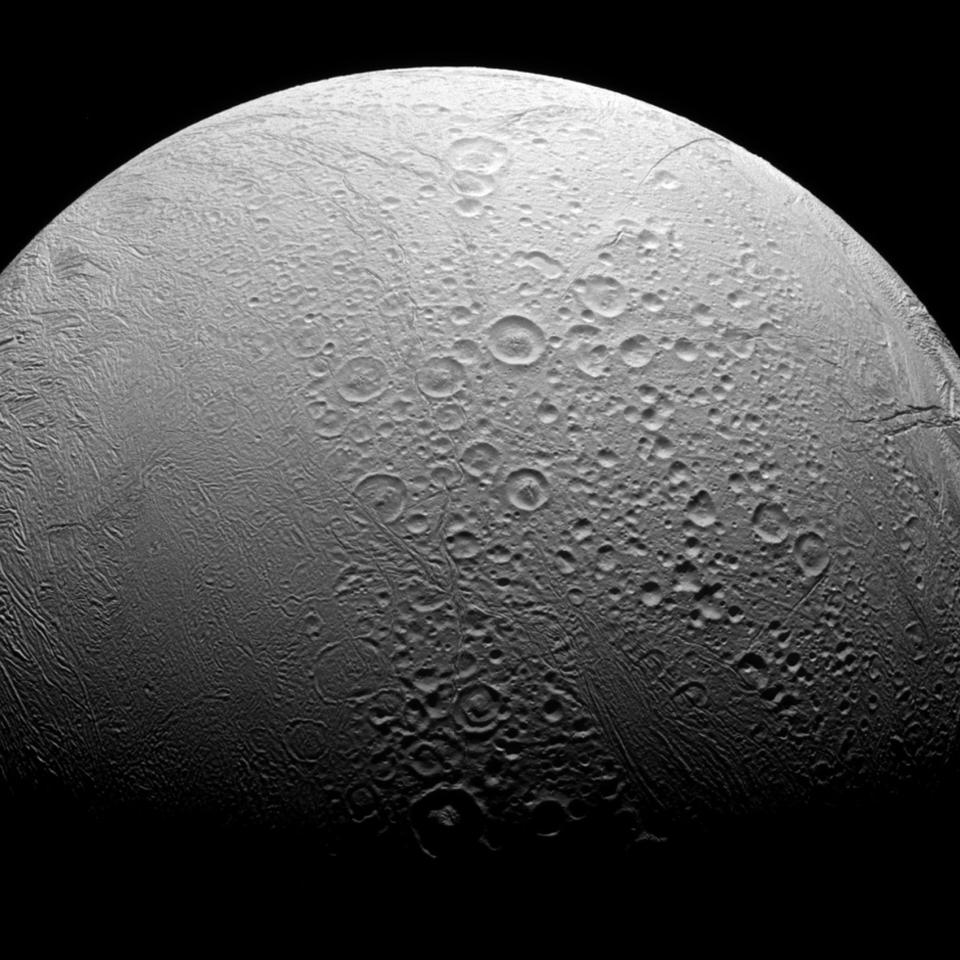Saturn’s icy moon Enceladus ‘has all the ingredients for alien life,’ scientists say

Geyser-like plumes of ice which erupt from the surface of Saturn’s moon Enceladus have offered a new hint that life could lurk in the moon’s subsurface ocean.
NASA’s Cassini probe sampled a plume of material erupting from Enceladus’s surface - but new analysis of the material suggests an environment where life could flourish inside hte moon.
Researchers led by Lucas Fifer of the University of Washington found that the plumes are chemically different from the ocean beneath - changed by their 800mph eruption into space.
It means that the surface of the moon could be much more hospitable to life than previously believed.

Fifer said, ‘Those high levels of carbon dioxide also imply a lower and more Earthlike pH level in the ocean of Enceladus than previous studies have shown. This bodes well for possible life.
‘Although there are exceptions, most life on Earth functions best living in or consuming water with near-neutral pH, so similar conditions on Enceladus could be encouraging.”
Read more from Yahoo News UK:
Boris Johnson's team forced to deny he only owns one pair of socks
Boy, 12, arrested on suspicion of homophobic assault in Liverpool
Ian Brady ‘had access to vulnerable teenagers in Wormwood Scrubs’
‘And they make it much easier to compare this strange ocean world to an environment that is more familiar.’
Fifer and his team believe that the moon’s high concentration of ammonium could also offer fuel for life.
Fifer said, ‘Though the high concentrations of gases might indicate a lack of living organisms to consume it all that does not necessarily mean Enceladus is devoid of life. It might mean microbes just aren’t abundant enough to consume all the available chemical energy.’


